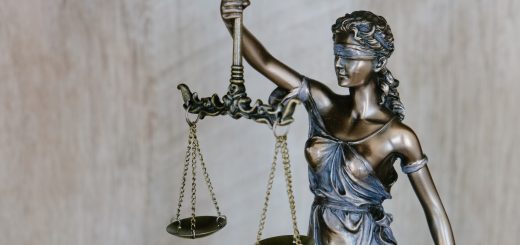Nova Chemicals Corporation v The Dow Chemical Co: The law of patent remedies takes a step forward

Introduction
In Nova Chemicals Corporation v The Dow Chemical Company et al., 2022 SCC 43 (“Nova Chemicals”) the Supreme Court of Canada (“SCC”) clarified the test for determining a proper accounting of profits when it is relied upon as a statutory remedy for patent infringement. In the process of doing so, the SCC finally admitted into Canadian jurisprudence the remedy of “springboard profits” for breaches of patent law. What follows is a detailed breakdown of the decision.
Facts
Nova Chemicals Corporation (“Nova”) and The Dow Chemical Company (“Dow”) are competitors in the Canadian plastics industry. From 2006 to 2014, Dow was successfully issued a patent for a lightweight and strong plastic that had multiple commercial applications. During that period of patent protection, which excludes all competing companies from appropriating the patented plastics technology for commercial purposes, Nova relied on Dow’s patented plastic for its own commercial products. Dow brought a successful patent infringement claim against Nova. Nova challenged the validity of Dow’s patent at the Federal Court of Canada (“FCC”) in Dow Chemical Company v NOVA Chemical Corporation, 2014 FC 844, having its claim dismissed and entitling Dow to an accounting of profits. At the Federal Court of Appeal (“FCA”), in Nova Chemicals Corporation v Dow Chemical Company, 2016 FCA 216, the FCA rejected all of Nova’s grounds for appeal and upheld the FCC’s judgement in full. Nova was granted leave before the Supreme Court of Canada on 20 April 2017.
Issues on Appeal
The SCC took up two issues on appeal:
First, did the lower courts err in calculating the profits payable to Dow under an accounting in profits?
Second, is Dow entitled to springboard profits?
Judgement
In an 8 to 1 decision written by Justice Rowe (Justice Cote in dissent), the SCC dismissed the appeal.
First, they found that the lower courts did not err in calculating the profits payable to Dow because they relied on the correct legal test.
Second, they found that Dow was entitled to “springboard profits,” and that such a remedy does have a place in Canadian patent law.
A Primer on Patent Law Remedies
Before diving into the specific issues on appeal, the SCC took the time to map out the fundamentals of patent law remedies. These remedies, all brought within statutory authority under the Patent Act RSC 1985 c P-4, can be divided into three categories: 1) reasonable compensation, 2) damages, and 3) an accounting of profits.
Reasonable Compensation
This statutory remedy is granted for any loss caused by the infringer’s use of the invention between the patent’s publication and the grant of the patent, entitling the patentee to reasonable royalties as defined by the FCC in Allied Signal v DuPont Canada Inc., 1998 CanLII 7464 (FC).
Damages
This statutory remedy can be granted to compensate the patentee for all pecuniary losses causally attributable to infringement after the grant of the patent.
Accounting of Profit
This equitable, discretionary remedy, given statutory authorization, requires the infringer to disgorge all profits causally attributable to infringement of the invention after the grant of the patent. This is an alternative to an award of damages.
The SCC then went on to provide a more in-depth account of how the accounting of profits remedy is calculated, dividing the methods into three categories: 1) differential costs, 2) full costs, and 3) differential profits.
Differential Costs
Differential costs require the infringer to disgorge between the actual revenues earned by selling the infringing product and actual costs incurred with producing the infringing product. Those costs must be directly attributable to the infringing product. The FCC in Monsanto Canada Inc. v Rivett [2010] 2 FCR 93, held that infringers cannot deduct expenses they would have incurred in the absence of infringement.
Full Costs
The full costs approach is identical to the differential costs approach with one key difference: part of the costs calculation can include a portion of the indirect expenses incurred with the making of the infringing product.
Differential Profits
Differential profits requires an infringer to disgorge the difference between the actual profits (actual revenue minus actual costs) earned by selling the infringing product and the profits it could have earned had it sold the best “non-infringing” option.
Finally, the SCC provided a three-step test for the process of accounting for profits:
Step One
There must always be a calculation of actual profit, regardless of which type of calculating method is relied upon.
Step Two
There must be a determination of whether there is a non-infringing option that can help isolate the profits causally attributable to the invention that was infringed upon. Here, the judge is to apply the principles of causation.
Step Three
If there is a non-infringing option, the profits the infringer could have made with it must be subtracted from the actual profits the infringer made from using the patentee’s invention. This provides the amount to be disgorged.
SCC Analysis
Issue 1
The first issue on appeal relates to the first and second steps of the test. Specifically, in determining A) whether constructive revenues and costs can be relied upon under step 1 and B) what constitutes a “non-infringing option” under step 2.
A) Constructive or Actual
The SCC held that no constructive calculation of revenue or costs can be relied upon to determine actual profits. Thus, if an infringer makes less profit than is theoretically realizable due to incurring higher costs than is necessary, this theoretical figure cannot be utilized to calculate profit. Similarly, if the infringer makes more profit than could have theoretically been done by the patentee, due to incurring lower costs than what was thought necessary, the theoretical predictive figure cannot be utilized to calculate profits.
B) Non-Infringing Option
The SCC held that a “non-infringing option is any [existing] product that helps the court isolate the profits causally attributable to the invention” (“original formulation”). It is not an infringer’s most profitable alternative sales product that it could have or would have sold if it did not rely on the patentee’s invention (“expanded formulation”). The Court then proceeded to i) outline the twin purposes of an accounting of profits remedy, and ii) provided the two reasons for arriving at this conclusion.
i) Purposes
Before doing so, the SCC outlined the two purposes of the accounting of profits remedy. Relying on its decision in Atlantic Lottery Corp Inc. v Babstock, 2020 SCC 19, the SCC held that the purpose of an accounting of profits remedy is to “ensure that all profits causally attributable to the invention are disgorged to the patentee” (Nova Chemicals, para 60) and, pursuant to the SCC’s decision in Monsanto Canada Inc. v Schmeiser, 2004 SCC 34, “to deter, but not punish, infringers” (Nova Chemicals, para 50). The SCC held that relying on the original formulation gives the best expression to the two underlying purposes of an accounting of profits remedy.
ii) Reasons
First, it ensures that the focus in the isolation analysis remains with the invention and the profits which sprung from it, not what the infringer “could have” earned or what they “would have” done if they did not rely on the invention, in keeping with the first purpose of the accounting of profits remedy.
Second, relying on the expanded formulation to determine what is a non-infringing option would incentivize an infringer to “shift its business capacity to a more profitable infringing product” (Nova Chemicals, para 62). Specifically, because the infringer can locate the non-infringing options wherever it chooses, it will always find a non-infringing option that it could or would have been able to bring to market to offset some of the profits it derived from the infringing invention. This would, as the SCC described, create a “form of business insurance for infringers,” allowing them to protect profits from existing businesses by framing them as “non-infringing options” when legal proceedings are being brought for infringing inventions under new business ventures (Nova Chemicals, para 62).
Issue 2
The second issue relates to the temporal reach of an accounting for profits remedy. Specifically, whether profits accrued from the infringement post-expiration of the patent (known as springboard profits) can also be included in the remedy to the patentee. The SCC answered in the affirmative (Nova Chemicals, para 74), providing two reasons for doing so.
First, springboard relief has been recognized by the SCC in the past, in the form of “springboard damages,” with its most recent awarding occurring in AstraZeneca Canada Inc. v Apotex Inc., 2015 FC 671. It is also consistent with the scheme and purpose of the Patent Act, particularly in how it protects the patentee’s benefit of building sales capacity and market share without market competition during the period of the monopoly provided to the invention (Nova Chemicals, para 79). The onus for proving this resides in the patentee.
Second, reasonable royalties are not functionally equivalent to springboard relief. Reasonable royalties, which are provided for any profits gained for an infringement between the period of filing a patent and being granted one, may contribute to building sales capacity and market share, but it is qualitatively different from the opportunities that the time-limited monopoly a patent provides a patentee after the granting of the patent. A monopoly where time is provided for further building sales capacity and market position in the absence of competition.
Policy Implications
Justice Rowe engaged in an equitable analysis of the consequences that would flow from allowing the appeal. Particularly, if the SCC would have accepted the expanded formulation, it would have the effect of disproportionately benefitting large corporations, who have more of the wherewithal to have either been actively developing a non-infringing equivalent, or planning to do so with its vast war chest of investment capital, technical expertise, and ability to scale up. Whereas smaller companies, by virtue of their lack of resources, would be much less likely to establish, in the absence of an actual non-infringing alternative, that they could or would have been able to develop one if they did not rely on the infringing product. In essence, in such a scenario, to borrow from Matthew 25:14 – 30, the well resourced can benefit from their wealth to mitigate the consequences of their wrongs, while the less resourced will be punished for their deprivation, by facing greater exposure to the full extent of the remedy.
Commentary & Conclusion
The SCC’s decision in this case highlights a divergence between the majority and dissenting opinion that, itself, can be located in a principled disagreement over the actual purpose of patent law remedies. Justice Cote’s dissent describes this purpose as “restorative,” giving primacy to the isolating function of the remedy (Nova Chemicals, para 137). In doing so, Justice Cote sees the expanded formulation as a more faithful expression of this isolating exercise, ensuring the tightest conception of the “but for” causation principle. Justice Rowe, speaking for the majority, describes the purpose as “protect[ive],” giving primacy to the disgorging function of the remedy (Nova Chemicals, para 44). In doing so, Justice Rowe sees the original formulation as the most faithful expression of this disgorging exercise, ensuring the widest net is cast in evaluating what profits the infringer gained from the value of the invention. Where disagreements exist about the purposes of statutory remedies, it stems from the fact that each interpreter can locate a part of the statute that supports their diverging view of the underlying remedies under dispute. Looking forward, the SCC’s plurality of interpretations has ruptured a uniform understanding of the purpose of the Patent Act, and the remedies associated with it. This may prompt Parliament to revisit the legislation to tighten up the language and provide greater precision. It may, in the absence of legislation, instead require the judiciary to again pronounce on the Patent Act, giving greater definition to its pillars. The issues raised in this case will certainly re-emerge and end its common law monopoly on the law on patent remedies.







Join the conversation